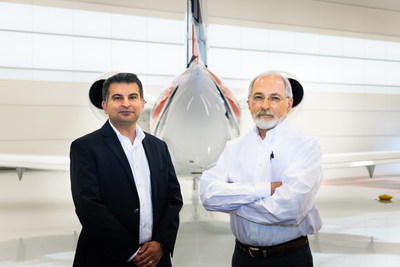The Federal Aviation Administration (FAA) is offering a $3 million grant to Auburn University’s National Center for Additive Manufacturing Excellence (NCAME). Over the next two years, researchers will be studying how to improve commercial air travel by implementing additive manufacturing technology with metal. This project should further the NCAME reputation for expertise in existing and emerging structural applications of advanced materials, namely for spaceflight.
The focus is on the variables involved in 3D printing that could be the cause of underlying defects. With so many different types of hardware, software, and materials in use today, there is plenty of unpredictability to deal with in terms of results. And while that might be somewhat more acceptable in making smaller parts, or items not expected to be used in critical applications, when building a plane, safety and perfection in performance are top priority.
Along with examining variables in manufacturing, the Auburn researchers will be exploring how microscopic details with 3D printed metal can cause resulting fatigue in parts, as well as fractures.

Auburn University is using a $3 million grant from the Federal Aviation Administration to improve commercial air travel through the use of 3D-printed (or additively manufactured) metal components. Pictured, from left, are Auburn University faculty Nima Shamsaei and Steve Taylor.
“This is what I call the ‘Achilles heel’ of additive manufacturing,” said NCAME director Nima Shamsaei, Philpott-WestPoint Stevens Distinguished Associate Professor of mechanical engineering, also serving as co-principle investigator (PI) on the project. “Such variations make the qualification and certification of AM materials and parts challenging.
“By understanding the sources of variability, controlling them, or accounting for them, we can generate more reliable materials data, and more reliable AM products.”
NCAME was founded in 2017 in a partnership between Auburn and NASA, and also co-founded the ASTM International Additive Manufacturing Center of Excellence.
Ultimately, the researchers hope that their study will be helpful to engineers designing aircraft—allowing them to build planes that are not only safer but also more streamlined. This collaboration teams faculty with skilled engineers and scientists from the FAA.
Industrial users continue to rely more on metal in 3D printing due to its strong mechanical properties that also yield parts lighter in weight—making them extremely viable for applications in aeronautics and aerospace.
[Source / Image: Business Insider]Subscribe to Our Email Newsletter
Stay up-to-date on all the latest news from the 3D printing industry and receive information and offers from third party vendors.
You May Also Like
Precision at the Microscale: UK Researchers Advance Medical Devices with BMF’s 3D Printing Tech
University of Nottingham researchers are using Boston Micro Fabrication‘s (BMF) 3D printing technology to develop medical devices that improve compatibility with human tissue. Funded by a UK grant, this project...
3D Printing Webinar and Event Roundup: April 21, 2024
It’s another busy week of webinars and events, starting with Hannover Messe in Germany and continuing with Metalcasting Congress, Chinaplas, TechBlick’s Innovation Festival, and more. Stratasys continues its advanced training...
3D Printing Webinar and Event Roundup: March 17, 2024
It’s another busy week of webinars and events, including SALMED 2024 and AM Forum in Berlin. Stratasys continues its in-person training and is offering two webinars, ASTM is holding a...
3D Printed Micro Antenna is 15% Smaller and 6X Lighter
Horizon Microtechnologies has achieved success in creating a high-frequency D-Band horn antenna through micro 3D printing. However, this achievement did not rely solely on 3D printing; it involved a combination...





























